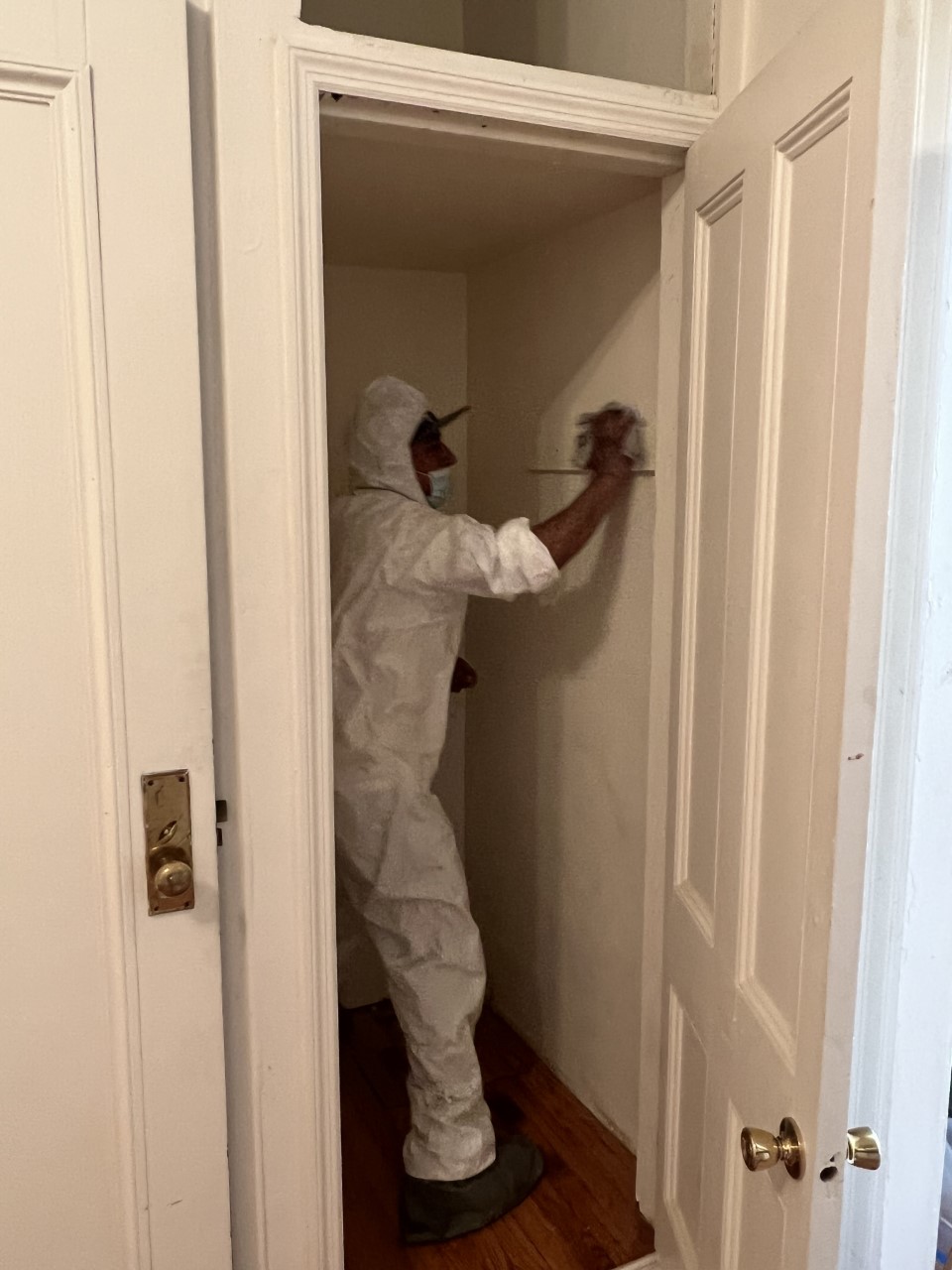Comprehensive Overview on Effective Lead Offense Removal Techniques
In the realm of environmental safety and security, dealing with lead offenses requires a thorough and structured method. This detailed overview begins by highlighting the vital preliminary actions of identifying lead threats through advanced assessment and testing methods. Techniques such as XRF analysis and dust wipe tasting are essential in pinpointing contamination sources. Additionally, the guide elaborates on the importance of adhering to stringent safety methods throughout the elimination procedure, including the use of proper PPE and isolating influenced locations (Lead Paint Removal Company). The subsequent sections assure to review post-removal confirmation and preventive strategies, ensuring lasting security and compliance. Discover the detailed information that make these techniques not simply efficient but essential.
Identifying Lead Dangers
Identifying lead dangers is a crucial primary step in alleviating the risks connected with lead direct exposure. Lead, a harmful steel, can be present in different ecological tools, including paint, dirt, water, and dirt. It poses serious wellness risks, especially to youngsters and expectant women, causing neurological damages and developmental delays. As a result, specific identification of prospective lead resources is crucial for effective remediation.
The initial phase in determining lead risks includes comprehending typical lead resources within the developed atmosphere. Structures developed before 1978 are especially vulnerable because of the prevalent use of lead-based paint during that period. Additionally, dirt contamination can take place from wearing away outside paint, commercial discharges, or historical use leaded gasoline.
An additional substantial resource is lead piping and plumbing fixtures, which can leach lead right into alcohol consumption water. Durable goods such as toys, porcelains, and imported items may also contain harmful lead degrees. Especially, work-related atmospheres and hobbies entailing lead can track impurities into homes.
Assessment and Screening
When attending to lead dangers, effective analysis and screening are critical. This crucial action makes sure the identification and metrology of lead existence, thereby leading subsequent remediation initiatives. Initial analysis usually involves an aesthetic evaluation to recognize prospective lead sources, such as degrading paint or contaminated dirt. This is complemented by even more rigorous screening methodologies to identify the extent of contamination.

Dirt clean tasting is another important technique, particularly in property setups. By collecting samples from floors, windowsills, and various other surface areas, this approach provides insights into possible direct exposure risks. Dirt screening around structure borders is essential to spot lead contamination that might position risks, particularly to kids.
Safe Removal Procedures
Upon completing extensive evaluation and testing, executing safe removal treatments is the following important stage in attending to lead dangers. This process guarantees that lead-contaminated materials are properly and securely removed, lessening danger to both workers and residents. The very first step includes isolating the damaged location using plastic sheeting and correct securing techniques to prevent the spread of lead dirt.
Workers must wear proper personal safety devices (PPE), including respirators, handwear covers, and non reusable More Help coveralls, to reduce direct exposure. Utilizing specialized tools and damp techniques, such as damp fining sand my response or using HEPA-filtered vacuum cleaners, decreases the dispersion of lead bits. It is essential to stay clear of completely dry sanding or rough blasting, as these approaches can generate unsafe lead dust.
Garbage disposal is one more vital element; all contaminated products must be firmly bagged and classified according to EPA and local guidelines. Additionally, detailed cleaning of the workspace with HEPA vacuums and damp wiping makes sure the elimination of residual lead fragments.
Post-Removal Verification

Confirmation of effective lead elimination, known as post-removal confirmation, is essential to make sure the safety and security and habitability of the remediated area. This process entails a collection of precise evaluations and examinations designed to discover any kind of recurring lead particles that may present wellness threats. The initial step usually consists of an aesthetic inspection to evaluate the completion and high quality of the removal job. This examination makes sure that all known sources of lead have actually been addressed and that no visible indications of contamination stay.
Adhering to the visual evaluation, ecological sampling is carried out. This entails collecting dust, soil, and often water samples from the remediated location. Certified laboratories analyze these examples to gauge lead levels, ensuring they fall below the security limits developed by regulatory bodies such as the Epa (EPA)
In addition, air high quality screening may be done to spot air-borne lead particles, specifically in situations where substantial lead-based paint elimination or renovation has actually happened. The results of these examinations supply quantitative information verifying that the lead levels are within permitted limitations.
Ultimately, post-removal confirmation functions as a crucial checkpoint, confirming the efficiency of the lead abatement initiatives and protecting the wellness of passengers and visitors.
Safety Nets and Upkeep

A crucial safety net includes the usage of lead-safe licensed specialists for any kind of remodelling, fixing, or painting tasks. These specialists are trained in practices that lessen lead dirt and debris. In addition, maintaining colored surface areas to avoid cracking or peeling off is essential, as degrading paint can release lead fragments right into the environment.
Educational campaigns targeting building owners and lessees concerning the dangers of lead and the importance of reporting any kind of potential hazards can even more improve precautionary efforts. Regular cleansing using HEPA vacuum cleaners and damp mopping techniques can substantially decrease lead dust accumulation.
Final Thought
In recap, efficient lead violation elimination necessitates a meticulous technique encompassing thorough analysis, precise screening, and rigid removal treatments. Ongoing assessments her comment is here and maintenance are crucial to reduce future lead hazards, consequently safeguarding public wellness and making sure sustained conformity with regulatory demands.